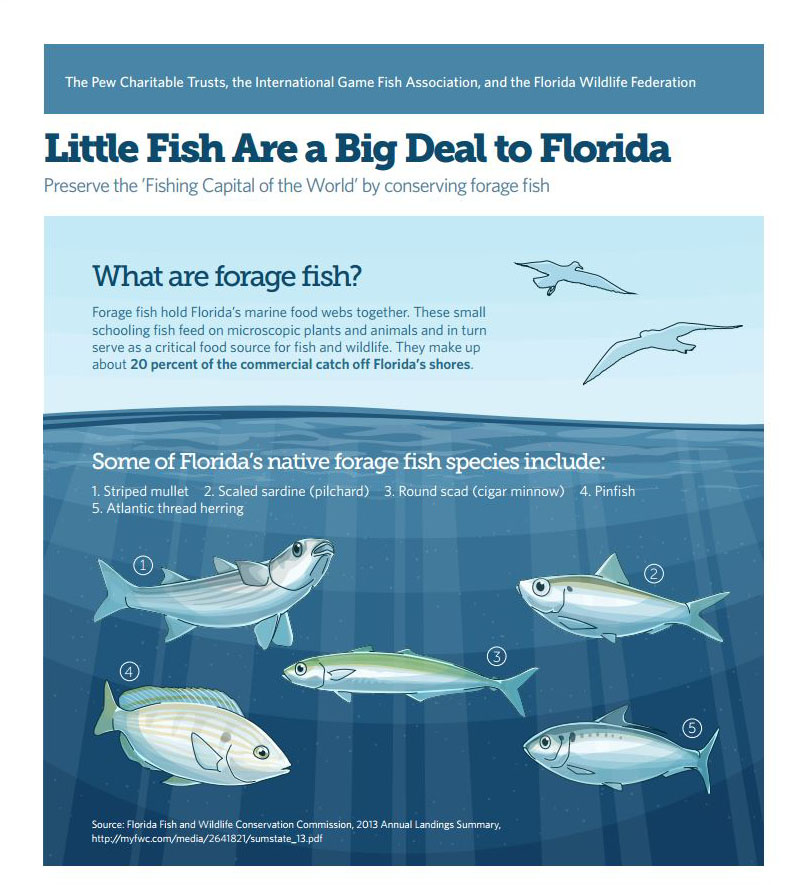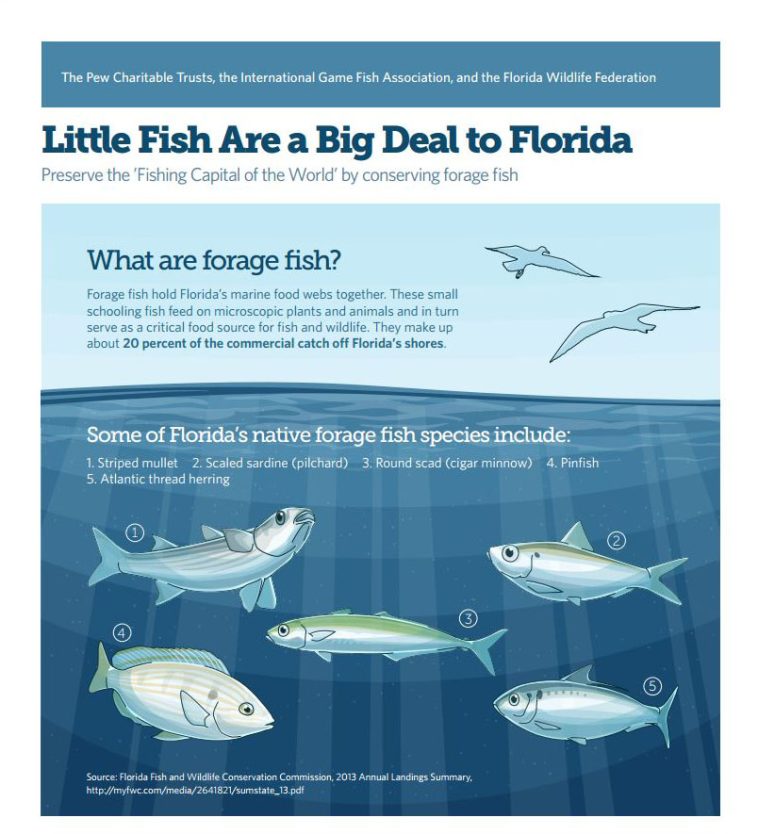
Exploring Digital Barriers in the World of Travel Content
The message “This content is not available in your region” has become a common sight in our increasingly digital age. As travel enthusiasts and adventurers rely more heavily on online resources for planning and inspiration, the digital barriers imposed by regional restrictions have sparked intense debate. In this opinion editorial, we take a closer look at the tangled issues surrounding geo-restricted travel content, the effects on travelers, and the potential solutions to these complicated pieces of the digital landscape.
From the outset, many travelers have encountered websites or services that simply tell them that they cannot access exciting destination guides, local tips, or even high-quality images of remote outdoor adventures. For those of us who rely on digital maps, virtual tours, and local recommendations, this blocking of content introduces a series of twists and turns that often leave us feeling both frustrated and curious.
Understanding the Roots of Regional Content Restrictions
Before we can figure a path through this challenge, it is important to take a closer look at why content is sometimes locked away behind regional barriers. The common message can be seen as a symptom of a larger issue, one that is full of problems linked to legal frameworks, licensing agreements, and local market strategies. However, underneath these complicated pieces lie several key factors:
- Licensing Agreements: Content providers often secure rights to distribute media only within certain geographical boundaries. This means that a high-quality video tour of a scenic mountain trail, for instance, might be reserved exclusively for audiences in specific countries.
- Government Regulations: Some governments impose strict controls on digital content to protect local culture or for political reasons. This can result in entire categories of content being off-limits in certain regions.
- Local Market Strategies: Companies may restrict content to target specific local audiences or to test products in one area before a global rollout. This is one of the many subtle details that influence how we encounter online travel content.
- Copyright and Distribution Issues: Content creators might only have the right to share their work in certain areas. As a result, a locally popular travel blog or video series might find itself suddenly unavailable to an international audience.
Each of these issues acts like one of the hidden complexities shaping our experience of digital travel content. When websites display a message that content is not available, they are often communicating one or several of these intricate realities, making it a nerve-racking experience for the would-be explorer.
How Geo-Blocking Influences Modern Travel Planning
The effects of region-specific restrictions extend far beyond a simple message on a screen. For many of us, planning the perfect getaway or adventure starts online, where we search for in-depth destination guides, insider tips, and multimedia presentations that spark our imaginations. When digital barriers get in the way, they create a disconnect between our travel dreams and the practical information needed to execute them.
Travelers’ First Encounters With Digital Roadblocks
Imagine you are planning a hiking trip to a breathtaking national park. After hours of research online, you stumble across a detailed guide loaded with stunning visuals, local insights, and interactive maps. But as you attempt to read more, the guide is abruptly replaced with the message “This content is not available in your region.” This experience is not only intimidating—it is also frustrating and off-putting for the eager traveler.
This situation highlights the juggling act between entertainment and information—a balance that is delicate and immediately affected by digital hurdles like geo-blocking. When critical or even recreational travel content is hidden behind regional barriers, it challenges travelers to find alternative sources that might be just as valuable, but possibly less user-friendly or polished.
Examining the Impacts on Destination Diversity and Local Culture
One often overlooked facet of regionally restricted content is its impact on cultural exchange. When travelers can only access information about certain destinations or activities, the vibrant diversity of global culture can become dimmed. We might find our understanding of lesser-known traditions, remote outdoor adventures, or local festivals reduced to generic descriptions available on mainstream platforms.
In essence, geo-blocking can sometimes lead to a form of digital echo chamber, where only certain voices or perspectives are heard. This not only weighs on the fabric of global travel culture but also makes it more challenging to discover off-the-beaten-path adventures and nuanced local traditions that are essential for a rich travel experience.
A Closer Look at the Impact on Outdoor Adventures
For those who relish the call of the wild, this digital censorship can feel particularly limiting. Outdoor adventures—like hiking, camping, kayaking, and wildlife safaris—often depend on regional content that explains the finer points or hidden complexities of local terrains and biodiversity. When this content is locked behind digital boundaries, adventurers can be left with incomplete or misleading information.
Accessing Safety and Practical Information
One of the key aspects of planning any adventure is ensuring safety. Detailed guides that offer weather updates, maps, and local emergency contacts are super important for those drawn to remote locations. When these resources are restricted, the potential for risk increases. Travelers may find themselves having to piece together critical information from multiple, possibly unreliable sources in order to figure a path through the planning process.
The following table summarizes some of the core benefits that online travel content offers to outdoor enthusiasts:
| Benefit | Description |
|---|---|
| Practical Safety Information | Offers detailed weather forecasts, emergency contact details, and first aid tips for remote locations. |
| Local Insight | Provides insider knowledge about trails, hidden water sources, and local regulations. |
| Visual Inspiration | High-quality photos and videos that help set expectations and inspire adventure. |
| Step-by-Step Guidance | Covers everything from how to reach a destination to recommendations for gear and accommodations. |
The absence of such information due to digital restrictions can leave adventurers feeling unprepared in critical moments, ultimately dampening the overall experience and enjoyment of the outdoors.
Empowering Local Communities Through Digital Inclusion
It is not just the globetrotters who suffer when content is regionally restricted—the local communities can also be affected. In many parts of the world, local businesses, tour operators, and cultural hubs rely on digital platforms to connect with visitors. When digital barriers are in place, local enterprises may lose out on potential customers, and the authentic, grassroots narratives that make travel so enriching can be drowned out by homogenized global content.
Many travel websites aim to strike a balance by offering region-specific guides that not only speak to external audiences but also honor the local context. These guides often take a closer look at the fine points of local history, traditional cuisine, and community-driven experiences. However, crafting such content requires collaboration between local experts and digital platforms—a process that can be mired in complicated pieces of international legislation and local red tape.
Strategies to Overcome the Challenges of Geo-Restricted Content
While the hurdles of geo-restriction appear intimidating, savvy travelers and content creators alike are continuously finding ways to work through or around these digital barriers. Here are some tactics that might help you access essential information when traditional sources remain out of reach:
Using VPNs and Other Technical Workarounds
One of the most popular methods to bypass regional restrictions is by using a Virtual Private Network (VPN). A VPN allows users to mask their actual location and connect to servers in other countries, thus unlocking content that is normally unavailable in their region. However, there are several caveats:
- Security Concerns: Not all VPN services are created equal. Some may expose you to security risks or fail to effectively hide your digital footprint.
- Legal Implications: Depending on your country’s laws, using VPNs to access restricted content may be contrary to local regulations.
- Performance Issues: Routing your connection through a remote server can slow down internet speeds, affecting your ability to stream high-resolution travel videos or download detailed guides.
While VPNs offer a practical workaround, it is critical to research reputable providers and remain informed about the laws and regulations that apply to your region.
Exploring Alternative Platforms and Local Resources
If technical workarounds seem off-putting or too nerve-racking, another approach is to diversify your sources of information. Sometimes, local websites, community forums, and social media groups provide richer, hands-on insights than larger, regionally restricted platforms. Here are some actionable tips:
- Local Blogs and Forums: Seek out travel blogs run by residents or frequent visitors to the destination. They often discuss small distinctions in local culture and provide practical advice that larger platforms might overlook.
- Social Media Groups: Platforms like Facebook or Reddit have dedicated communities for travelers interested in niche topics. These groups are gold mines for firsthand reports and advice.
- Local Tourism Websites: Often managed by regional governments or local tourism boards, these sites can provide essential safety information, event calendars, and thorough destination guides that are free from geo-restrictions.
- Offline Resources: Do not discount the value of travel books, brochures, and local maps. In many cases, these sources contain the nitty-gritty details that digital accounts may miss.
By branching out across various platforms and sources, you enhance your ability to figure a path through the maze of regionally restricted digital content. Moreover, you’ll gain a more rounded understanding of your destination, which is essential when planning a successful outdoor adventure.
Real-Life Stories: Travelers Facing Geo-Restricted Content
Several adventurous souls have shared their experiences of contending with digital restrictions and found innovative ways to get around them. Their stories not only shed light on the frustrating nature of these barriers but also provide practical lessons for those who might face similar roadblocks.
Case Study 1: A Backpacker in Central Asia
A seasoned backpacker recently recounted the challenges encountered while researching less-traveled paths in Central Asia. When his favorite travel service displayed the message indicating that “This content is not available in your region,” what initially seemed like a nerve-racking setback turned into an opportunity. He started reaching out to local hosts and joining region-specific travel forums. By poking around in these communities, he was able to gather insider tips on hidden mountain trails, authentic local dishes, and cultural events that were otherwise absent from mainstream travel guides.
This experience demonstrates how the tangled issues of geo-restriction can sometimes be turned to a traveler’s advantage. The backpacker described the process as a journey into the subtle details of local culture—one filled with little twists and surprising discoveries that he might not have experienced through a standard online search.
Case Study 2: Family Vacation Planning in Europe
Another instance involves a family planning a vacation to an iconic European city known for its vibrant arts scene and historic landmarks. Their initial research was met with frustration when several online travel resources were apparently available only in select regions. Realizing that the content constraints were hindering their planning, the family resorted to a multi-pronged approach: contacting the local tourist office, seeking advice from travel agencies specializing in European getaways, and even enlisting the help of online expat communities. Through these varied sources, they assembled a comprehensive itinerary that featured not only the usual tourist traps but also off-the-beaten-track museums, quaint cafés, and neighborly art studios.
For them, the regional restrictions were a minor setback—a complicated piece of the process that was ultimately resolved through persistence and diverse resource exploration. Their story illustrates the importance of adaptability when managing your way through digital obstacles during travel planning.
Government Policies, Corporate Decisions, and Their Role in Digital Exclusion
It’s clear that geo-restriction extends beyond mere technical limitations; it is a byproduct of a complex interplay between corporate strategies and government regulations. Understanding this landscape is key to appreciating why such content barriers exist and how they can be reshaped.
Impacts of Government Regulations
In various parts of the world, local governments have pressed for stricter controls on digital content. These controls are often justified on the grounds of protecting national interests, preserving cultural heritage, or ensuring that local industries thrive without overwhelming foreign competition. While these goals are often well-intentioned, they can lead to a digital environment that is full of problems for international visitors. Travelers trying to research local events, delicacies, or even fine points of historical accuracy might find themselves at odds with censors or digital filters that enforce outdated policies.
The following bullet list outlines some of the ways government regulations impact travel content:
- Content Censorship: Certain topics may be deliberately downplayed or entirely excluded, leading to a skewed portrayal of a destination.
- Localized Licensing: Agreements that restrict certain media to local audiences often affect the quality and comprehensiveness of the available guides.
- Selective Prominence: In some cases, government-backed tourism portals may prioritize resources that support a specific narrative about their country, limiting broader cultural insights.
These effects can make it challenging for travelers to assemble a holistic view of a destination, especially if they are dependent on digital content to plan their itinerary.
The Role of Corporate Strategies in Geo-Blocking
Alongside governmental influence, corporate decisions also play a critical role in shaping what content you can—and cannot—access online. Many major travel content providers implement geo-blocking as a way to manage their advertising revenue, protect proprietary content, or target specific demographics. This deliberate strategy often creates an imbalance where the user experience varies widely depending on where one is located.
Corporations might argue that these measures allow them to better manage revenue streams and invest in content tailored to local market tastes. However, as a traveler, this often translates to having to work through the tangled issues of region-based limitations, which can frustrate those seeking a seamless digital experience.
Innovative Solutions and Future Outlook
Looking ahead, there is cautious optimism that both technological advancements and evolving regulatory frameworks could pave the way toward a more universally accessible digital travel landscape. Stakeholders from tech companies to local governments, and even global travel communities, are beginning to explore solutions that respect regional sensitivities while ensuring global accessibility.
Technology as a Bridge Over Digital Divides
Emerging technologies offer promising avenues to overcome the complex pieces of digital restrictions. We’re seeing developments in the following areas:
- Enhanced VPN Services: Future VPN solutions may combine enhanced security with better performance, helping users reliably access geo-restricted content without compromising their online safety.
- Decentralized Content Platforms: Blockchain and peer-to-peer networks might usher in a new era where content is less centralized and hence, less prone to region-specific restrictions.
- Localized Content Integration: Advancements in artificial intelligence could help tailor content in real time, ensuring that users receive localized versions that retain the richness of global perspectives.
These innovations signal a potential pivot from the current status quo where travelers repeatedly encounter messages telling them that the content they need simply isn’t available in their region. Instead, a future with more inclusive digital travel content seems on the horizon.
Collaborative Efforts for a More Inclusive Digital Future
The path to a truly borderless digital travel resource system will demand cooperation between governments, content providers, and the travel community. Key strategies include:
- Public-Private Partnerships: Collaborative projects can help produce high-quality, region-sensitive content without sacrificing global accessibility.
- Regulatory Reforms: Policy makers might consider regulatory reforms that balance the protection of local interests with the need for global information flow, enabling travelers to access richer and more authentic content.
- Community-Driven Content Creation: Supporting citizen journalism and local travel blogs can foster a diverse digital landscape that bridges the gap between regionally restricted and globally accessible content.
When governments and corporations join forces with local travel experts and enthusiasts, there is tremendous potential to create an online ecosystem that better serves the needs of today’s global traveler. This cooperation, though not without its challenges, could alleviate many of the twisted issues currently burdening the digital travel space.
A Call to Action for Travelers and Content Creators
As we reflect on these complex obstacles, the onus is on both travelers and content creators to adapt and advocate for a more open digital world. For those of us who constantly work through digital roadblocks, the solution may lie in adopting a more diversified approach to gathering information. This means not relying solely on one digital platform, but embracing a variety of sources—each offering its own set of fine points and subtle details about the destinations we love.
Taking the Wheel: Practical Steps to Overcome Digital Restrictions
If you find yourself frustrated by messages that content is not available in your region, consider these enhanced strategies to broaden your travel research:
- Expand Your Search: Use multiple search engines, and explore region-specific forums and blogs. Sometimes the best insights come from local experts who write in native languages.
- Engage with Online Communities: Join travel groups on social media platforms. These groups can offer real-time advice and recommendations that are tailored to your location.
- Leverage Technology Thoughtfully: While VPNs and proxy servers are useful, mix their use with investigations into local content channels to ensure accuracy and context.
- Promote Local Voices: Where possible, support local content creators and tourism boards. Their firsthand knowledge and passion for their regions often yield more authentic, detailed insights.
By actively engaging with these practices, you not only empower yourself as a traveler but also contribute to a broader movement aimed at making travel content more inclusive and accessible for everyone.
Conclusion: Looking Beyond the Message
The seemingly simple message “This content is not available in your region” conceals within it a world of issues that affect every facet of how we experience travel information today. From licensing and government restrictions to corporate strategies and technological barriers, the factors influencing digital travel content are both multifaceted and full of problems. Yet, in the midst of these challenges, there emerges a spirit of resilience and innovation among travelers and content creators alike.
As we continue to get into the intertwined relationship between physical travel experiences and their digital representations, we must remember that every obstacle presents an opportunity. The experience of encountering digital limitations often nudges us to explore deeper, search wider, and engage more meaningfully with the information available from multiple sources. It is through this process of working through tangled issues—be it by using VPNs, tapping into local communities, or advocating for more open digital policies—that we truly expand our horizons.
In the end, the challenges of geo-restricted content are a call to action for everyone involved in the travel ecosystem. For travelers, it is a reminder that the journey starts not just with the planning of a route, but with the persistent quest for authentic, secure, and all-encompassing information. For content creators and policymakers, it is an invitation to take a closer look at how their decisions can foster greater cultural exchange and open up the pathways for adventurous souls around the world.
By embracing a future where digital barriers are minimized, we can ensure that everyone—from the solo backpacker to the family seeking a European escape—has access to the invaluable insights required to enjoy the best of what our world has to offer. In this global age of exploration, our ability to work through digital obstacles will ultimately define the richness of our travel experiences.
Travel is not just about physical journeys; it’s also about the pathways we carve in the digital realm to access, share, and celebrate the beauty of our world. As the conversation around geo-restriction continues, let us remain committed to finding our way through these tricky parts, staying resilient in the face of intimidating digital barriers, and always pushing forward to discover the small distinctions that make every travel experience unique.
Key Takeaways for Today’s Digital Traveler
To sum up the multifaceted discussion, here are some of the essential points that were discussed throughout this editorial:
- Understanding Digital Barriers: Recognize that geo-restriction is influenced by licensing, government regulations, and corporate strategies.
- Diversify Sources: Avoid relying solely on global platforms by exploring local websites, community blogs, and social media groups.
- Smart Technology Use: Leverage VPNs with caution and use technological workarounds responsibly.
- Advocate for Inclusivity: Encourage a movement that supports open and globally accessible travel content.
- Embrace Local Wisdom: Engage directly with communities at your destination to experience authentic cultural narratives.
The future of digital travel content looks promising as we see rapid advancements in technology and a growing global awareness of the need for seamless information flow across borders. By channeling our collective creativity and determination, we can overcome the nerve-wracking, off-putting, and sometimes intimidating restrictions that have long challenged our ability to explore and connect with the world.
Travel is about discovery—the physical exploration of landscapes and the digital uncovering of stories and hidden insights about every corner of the globe. Let us all commit to breaking down these barriers, working through the little details, and ensuring that the inspiration and guidance found online are available to every traveler, no matter where they reside.
As we sign off on this reflection, remember that every twist and turn on your journey, whether digital or physical, holds the potential for unexpected adventure and learning. Let today be a reminder that the spirit of exploration is not confined by borders, and that the ever-evolving digital landscape can be shaped into a tool of global connectivity and shared experience.
In embracing the challenges and opportunities of our modern travel era, we set the stage for a world where every traveler can find their way, piece by piece, through the increasingly interconnected mosaic of our global community.
Originally Post From https://www.sun-sentinel.com/2025/10/12/floridians-win-when-forage-fish-are-protected-opinion/
Read more about this topic at
When I try to access certain websites, it says …
Why am I seeing the message “Access denied. Duo …


